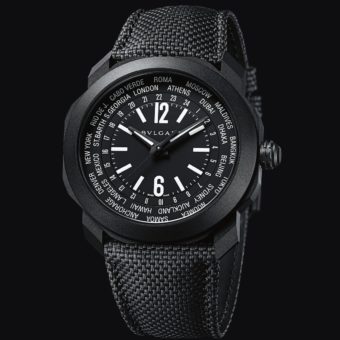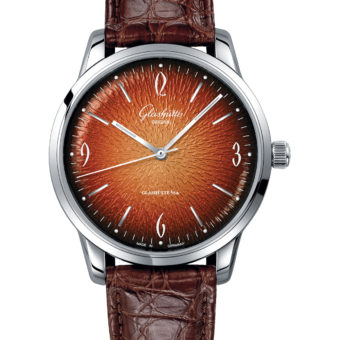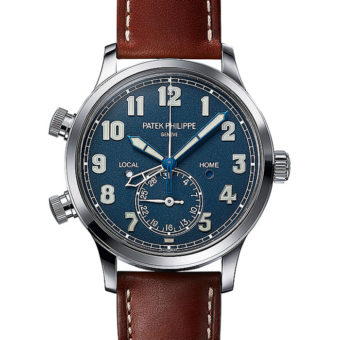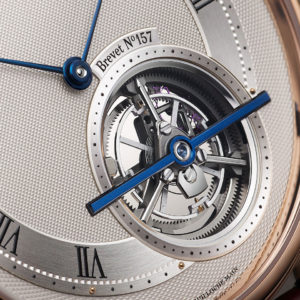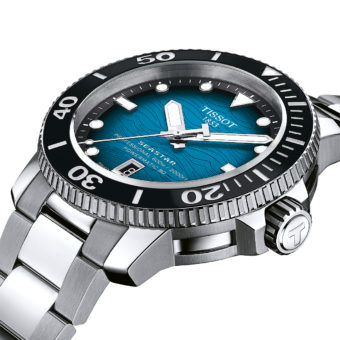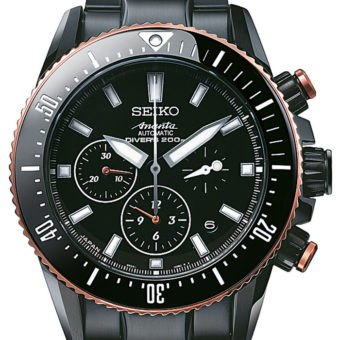
The original Breguet Hora Mundi rocked Baselworld in 2011 with its world-premiere instant time-zone jump display, with synchronized date, day/night and city indications. This year the Classique Hora Mundi 5727 is being reintroduced with the same groundbreaking Caliber 77F0 (based on Caliber 777 with an additional plate), but in a more classic, accessible case and dial design. The new design is simple and classic, yet distinguished by its complex hand engraving. The great thing about this timepiece is that because of the way it works, it is the cleanest world-timer dial on the market, with no ring of 24 cities, yet a very large dial, which leaves room for, in this case, ample hand engraving: there are six different guilloché patterns on the dial. The largest area of the silvered gold dial has a clou de Paris hobnail motif. The 24-hour indicator is decorated with two different engine-turned patterns. A flame pattern on the upper part bears the Breguet inscription. The lower section is engraved with a cross weave pattern and is stamped with the watch’s serial number. It also has signature Breguet open-tipped hands, Roman numerals and fluted caseband.

Basically, the way the watch functions is by a mechanism that links the hands to a mechanical memory that keeps track of the time in two time zones. Either home or local time are displayed on demand, which triggers a tracking calendar that simultaneously indicates day or night. From among the 24 available time zones, the wearer pre-selects two cities for which he wishes to display local time. Once set, he can instantly change all displays from one city to the other by pressing on the combined crown/pushpiece at 8 o’clock. For example, assume it is 4 p.m. in Paris on the 25th of the month. Rotating the combined crown/push-piece reveals “Paris” in the window at 6 o’clock, then the crown at 3 o’clock is used to set the hands to 4 o’clock and the date to 25, taking care that the day/night indicator shows the sun. For quick display of the local time in Sydney, the crown/push-piece is rotated to bring up the name of the Australian city in the window at 6 o’clock; the watch then automatically sets itself to Sydney time. Accurate operation during setting is ensured by a stop-second system. Since the difference in time is nine hours, the hour hand will move forward by nine hours. At the same time, the date will change to the 26th and the day/night indicator will turn to show the moon. When it is 4 p.m. in Paris, it is 1 a.m. the next day in Sydney. Once the watch has been preset, the instant-jump time zone display system will instantly change all the indications — hour, date and day/night — from Paris time to Sydney time when the wearer presses on the crown/push-piece.
There are four patents pending for this movement’s construction: for the mechanism with two time zones; the display of a time zone on demand via the main set of hands; the programmable mechanical memory wheel; and the mechanism that drives the dragging hand that displays the date.
This version of the Hora Mundi measures only 12.6 mm thick compared to the 2011 version (below), which was 13.55 mm thick, with a heavy enamel motif on the dial. The 43-mm case is 18k white gold or 18k rose gold. The Caliber 77F0 is 12 lignes, with 43 jewels, a 55-hour power reserve, a rotor in 18k gold, a flat balance spring and Swiss straight-line lever escapement in silicon. It has a Breguet balance wheel with four adjusting screws, and can be adjusted in six positions. It is water resistant to 30 meters, and priced from $68,600 to $69,100.


